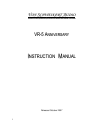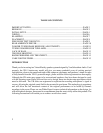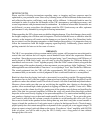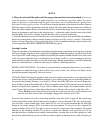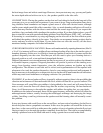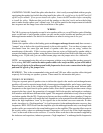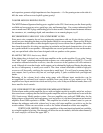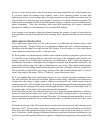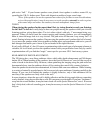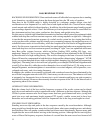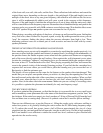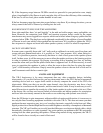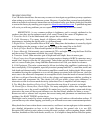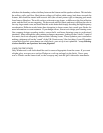13
B). If the frequency range between 20-30Hz sounds too powerful in your particular room, simply
place a large handful of the Dacron in each vent tube; this will lower the efficiency of the vent tuning.
If the bass is still too loud, place another handful in each vent.
If the low frequency range has come into proper balance, stop there. If you change locations, you can
always remove the balls of Dacron by reaching into the vent.
BASS RESPONSE TUNING FOR TUBE AMPLIFIERS:
Since tube amplifiers have “air and liquidity” in the mid and treble ranges, many audiophiles use
them. However, the saturation, back EMF, and transient response delays caused by the output
transformers may cause sluggish bass response which can be heard when using any speaker that has
response below 30Hz. The deep bass can be tightened considerably by the addition of several handfuls
of Dacron in each vent which is then pushed into the enclosure. It is possible to tighten the VR-5's
bass response to a degree not heard with other speaker systems, so don’t be afraid to experiment!
LACK OF APPARENT BASS:
In some rooms, especially those with “soft” walls such as wallboard over studs, open floor plans, and
rooms with poor dimensional ratios, it is possible to “lose” bass response. Also, when sitting in a
“null,” it is possible to perceive, incorrectly, that there is a lack of bass power in the speaker system
itself. In these cases, it will be necessary to move either the speaker position or the listening position
in order to optimize the response. By playing a recording with a repeating bass line, try walking
around the room until you find the places where there is apparent bass. It will be necessary, in some
cases, to reposition the speakers in order to allow the room to boost the bass by using the natural
“gain” of the boundary reflections. Simply move the speakers closer to the rear wall or side wall in
small increments until the bass sounds right.
ANCILLARY EQUIPMENT
The VR-5 Anniversary is far more transparent than any other competing design, including
electrostatics. (If you don’t believe this, put any electrostatic next to the VR-5 and use a transparent
switching device such as a copper knife switch to directly compare the sound of the VR to the
electrostatic. Make sure that you use the same channel, since the electronics may have a large
difference in sound between the channels, and the same brand of cable. It may be necessary to use a
metal film resistor to equalize the sensitivity of the louder speaker in order to make a fair test.) Here
at the factory lab, we have used several brands of electrostatic and ribbon speakers for comparison
and have been consistently amazed at the results we are achieving with dynamic cone drivers!
Since the VR design is quite transparent, without audible coloration and distortion, it is necessary to
use only the finest sounding equipment available to drive the VR-5's. This does not mean you must
purchase the most expensive gear, just good sounding electronics, especially in the front end. Many
digital products have limited depth and excess treble brightness caused by overemphasis of harmonic
structure. The VR’s will enable you to easily hear the differences even between digital cables, which
theoretically, should have no sonic signature! Any sonic qualities you attribute to the VR's are actually
coming from the chain preceding the speakers. When using neutral driving equipment, the VR-5’s
will be found to have virtually no sound of their own!



